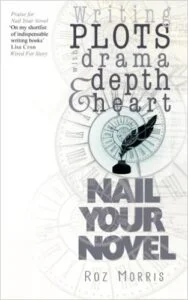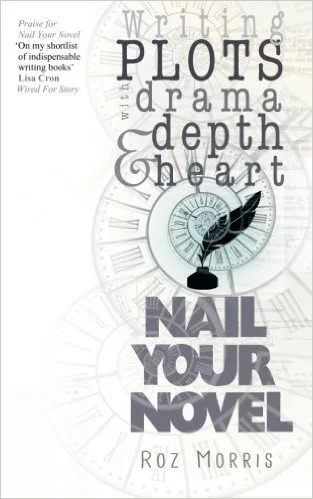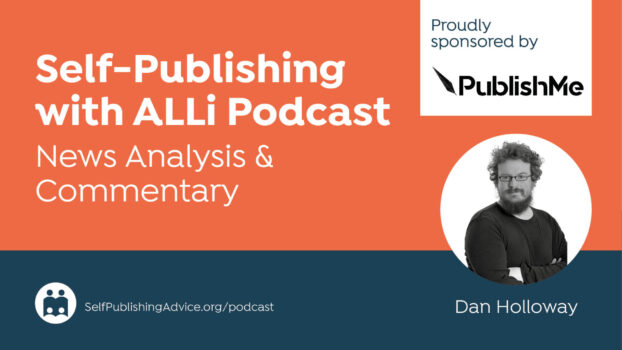
ALLi Professional Member Roz Morris
Author, ghost-writer and writing coach Roz Morris provides a handy checklist to help you make sure you’re not making classic novice errors when planning the plot of your novel.
- Far-fetched or trite story metaphor Metaphors only work if they are used well and go deep. If your characters’ activities are to be a metaphor, such as making a quilt or staging a village pantomime, include a sense of deep-level change.
- Adding too many ideas and themes If writing a novel is like cooking, you could go mad and add all the exotic spices in your cupboards. But beyond a certain point you will muddy the dish. The artistry is to squeeze maximum richness out of carefully chosen ingredients.
- Not keeping inner conflict hidden Novels are different from TV soap operas, which generate conflict with outrageous, uninhibited characters who argue all the time and never keep anything bottled up. This is not how most people behave. (Thank goodness!) Keep conflict on the inside for as long as possible.
- Convenient blindness to technology Cellphones and the internet have made life easier – and plotting harder. Embrace them, don’t avoid them. If your characters could get out of trouble with a simple Google search, make that happen. Find a different way to keep the tension going. Entire message boards exist to lampoon stories that wouldn’t have happened if the characters had made a phone call. You do not want to be in their hall of shame.
- Excessive use of dreams Think of dream sequences as a form of exposition. There are times when the reader will enjoy a message from the character’s subsconscious, but only if you’ve already made them insanely curious. If you want to show a memory or buried information, there’s usually a better solution. Ask yourself “Is there another way?”
- Genre mixing As an indie, you are not bound by trade publishers’ genre categories, but some genres have conventions that aren’t compatible. Don’t try to please two sets of readers whose tastes might clash – or at least choose one as your major genre, and mix in the other in an accessible way.
- Nested stories Readers are wary of stories within stories, or books within books. They know they’re not as ‘real’ as the rest of the action. Make sure you give the reader a reason to be curious about this ‘made-up’ material – a mystery to solve or something to find.
- Switching styles Although you must hone your beginning to intrigue the reader, it must be true to the rest of your book. If you begin like a thriller, that’s what you prepare your readers for.
- Tunnel vision Don’t be afraid to move away from your original outline as you write, if the story demands it. I strongly believe in outlining a novel before I start to write, but give yourself room to develop in new directions if inspiration strikes. Look for the dramatic possibilities beyond your original storyline.

Roz explores the topic of this post in great detail in this book
This post is an abridged version of the Appendix from Roz Morris’s guidebook for authors, Nail Your Novel – Writing Plots with Drama, Depth and Heart – just one of three books in her highly popular Nail Your Novel series. And if you’ve ever been tempted to ghost-write, Roz has just launched a new online course – Become a Ghost-writer: Learn How To Write Books For Others, Win Projects and Make Money (Early bird deal gets you a US$50 discount until 17 May.)
OVER TO YOU Do you have any rookie plotting errors to add to Roz’s list? Any striking examples to add? We’d love to hear them!
RELATED POSTS
 The Better Way to Write a Book – Plotter or Pantser? – with Keith Dixon, Rosalind Minett, David Penny & Debbie Young
The Better Way to Write a Book – Plotter or Pantser? – with Keith Dixon, Rosalind Minett, David Penny & Debbie Young
How to Use the Snowflake Technique to Write a Novel – by Richard Denning
How to Self-Edit Your Novel – by Jessica Bell
#Authors - 9 top tips on avoiding rookie plotting errors by #writing expert @Roz_Morris #ww Share on X




[…] Writing: 9 Rookie Errors to Avoid When Plotting Your Self-Published Novel […]
[…] Writing: 9 Rookie Errors to Avoid When Plotting Your Self-Published Novel […]
[…] and character are so tightly intertwined that it’s hard to separate the two. Roz Morris shares how to avoid plotting mistakes, Chuck Wendig explores dialogue and how it relates to plot and character, Mike Mariani discusses […]
I hate outlining. It makes me feel like I’m wearing a raincoat in the shower. I’m a true ‘Pantser’. Different strokes.
The rookiest of mistakes — I didn’t know ANYthing about story structure when I wrote my first novel. I had to completely deconstruct it and re-write it once I discovered that piece of basic story-telling.
Other than that, I think my biggest weakness was your second mention — too many ideas or themes. I’ve since learned (it’s taken 11 books) that leaner is better.
Thanks for the great post.
“Don’t add too many themes.” Now she tells me! I wish I’d had someone whispering that in my ear years ago.
Great advice, succinctly put.
Thanks, John! Psst…. your themes aren’t wasted. Save them for another book 🙂